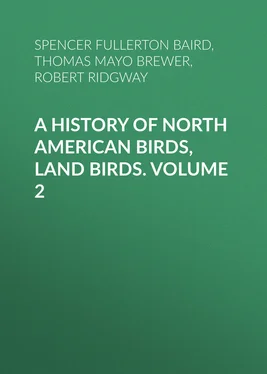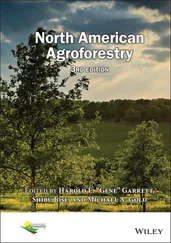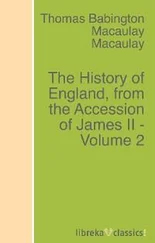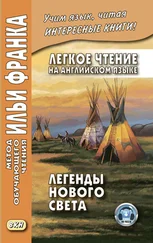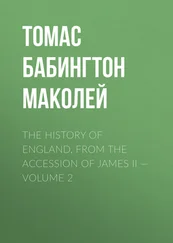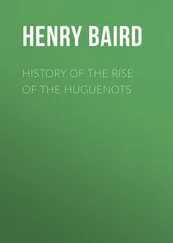Spencer Fullerton Baird - A History of North American Birds, Land Birds. Volume 2
Здесь есть возможность читать онлайн «Spencer Fullerton Baird - A History of North American Birds, Land Birds. Volume 2» — ознакомительный отрывок электронной книги совершенно бесплатно, а после прочтения отрывка купить полную версию. В некоторых случаях можно слушать аудио, скачать через торрент в формате fb2 и присутствует краткое содержание. Жанр: foreign_antique, Биология, foreign_edu, на английском языке. Описание произведения, (предисловие) а так же отзывы посетителей доступны на портале библиотеки ЛибКат.
- Название:A History of North American Birds, Land Birds. Volume 2
- Автор:
- Жанр:
- Год:неизвестен
- ISBN:нет данных
- Рейтинг книги:3 / 5. Голосов: 1
-
Избранное:Добавить в избранное
- Отзывы:
-
Ваша оценка:
- 60
- 1
- 2
- 3
- 4
- 5
A History of North American Birds, Land Birds. Volume 2: краткое содержание, описание и аннотация
Предлагаем к чтению аннотацию, описание, краткое содержание или предисловие (зависит от того, что написал сам автор книги «A History of North American Birds, Land Birds. Volume 2»). Если вы не нашли необходимую информацию о книге — напишите в комментариях, мы постараемся отыскать её.
A History of North American Birds, Land Birds. Volume 2 — читать онлайн ознакомительный отрывок
Ниже представлен текст книги, разбитый по страницам. Система сохранения места последней прочитанной страницы, позволяет с удобством читать онлайн бесплатно книгу «A History of North American Birds, Land Birds. Volume 2», без необходимости каждый раз заново искать на чём Вы остановились. Поставьте закладку, и сможете в любой момент перейти на страницу, на которой закончили чтение.
Интервал:
Закладка:
Melospiza melodia.
This genus differs from Zonotrichia in the shorter, more graduated tail, rather longer hind toe, much more rounded wing, which is shorter; the tertiaries longer; the first quill almost the shortest, and not longer than the tertials. The under parts are spotted; the crown streaked, and like the back.
There are few species of American birds that have caused more perplexity to the ornithologist than the group of which Melospiza melodia is the type. Spread over the whole of North America, and familiar to every one, we find each region to possess a special form (to which a specific name has been given), and yet these passing into each other by such insensible gradations as to render it quite impossible to define them as species. Between M. melodia of the Atlantic States and M. insignis of Kodiak the difference seems wide; but the connecting links in the intermediate regions bridge this over so completely that, with a series of hundreds of specimens before us, we abandon the attempt at specific separation, and unite into one no less than eight species previously recognized.
Taking, then, the common Song Sparrow of the Eastern Atlantic States ( M. melodia ) as the starting-point, and proceeding westward, we find quite a decided difference (in a variety fallax ) when we reach the Middle Province, or that of the Rocky Mountains. The general tints are paler, grayer, and less rusty; the superciliary stripe anteriorly more ashy; the bill, and especially the legs, more dusky, the latter not at all to be called yellow. The bill is perhaps smaller and, though sometimes equal to the average of eastern specimens, more slender in proportion. In some specimens (typical fallax ) the streaks are uniform rufous without darker centres,—a feature I have not noticed in eastern melodia . Another stage ( heermanni ) is seen when we reach the Pacific coast of California, in a darker brown color (but not rufous). Here the bill is rather larger than in var. fallax , and the legs colored more like typical melodia . In fact, the bird is like melodia , but darker. The stripes on the back continue well defined and distinct. M. samuelis (= gouldi ) may stand as a smaller race of this variety.
Proceeding northward along the Pacific coast, another form (var. guttata ), peculiar to the coast of California, is met with towards and beyond the mouth of the Columbia (coming into Southern California in winter). This is darker in color, more rufous; the stripes quite indistinct above, in fact, more or less obsolete, and none, either above or below, with darker or blackish centres. The sides, crissum, and tibia are washed with ochraceous-brown, the latter perhaps darkest. The bill is proportionally longer and more slender. This race becomes still darker northward, until at Sitka (var. rufina ) it shows no rufous tints, but a dusky olive-brown instead, including the streaks of the under parts. The markings of the head and back are appreciable, though not distinct. The size has become considerably larger than in eastern melodia , the average length of wing being 3.00, instead of 2.60.
The last extreme of difference from typical melodia of the east is seen in the variety insignis from Kodiak. Here the size is very large: length, 7.00; extent, 10.75; wing, 3.20. The bill is very long (.73 from forehead), the color still darker brown and more uniform above; the median light stripe of vertex scarcely appreciable in some specimens; the superciliary scarcely showing, except as a whitish spot anteriorly. The bill and feet have become almost black.
The following synopsis may serve as a means by which to distinguish the several races of this species, as also the two remaining positive species of the genus:—
A.Lower parts streaked.
1. M. melodia.White of the lower parts uninterrupted from the chin to the crissum; the streaks of the jugulum, etc., broad and cuneate.
a. Streaks, above and below, sharply defined, and distinctly black medially (except sometimes in winter plumage).
Ground-color above reddish-gray, the interscapulars with the whitish and black streaks about equal, and sharply contrasted. Rump with reddish streaks. Wing, 2.70; tail, 2.90; bill .36 from nostril, and .30 deep. Hab. Eastern Province of United States, to the Plains on the west, and the Rio Grande on the south … var. melodia . 2 2 Winter plumage. Rusty prevailing above, but hoary whitish edges to feathers still in strong contrast; streaks beneath with a rufous suffusion externally, but still with the black in excess.
Ground-color above ashy-gray, the interscapulars with the black streaks much broader than their rufous border, and the whitish edges not in strong contrast. Rump without streaks. Wing, 2.80; tail, 3.15; bill, .33 and .22. Hab. Middle Province of United States … var. fallax . 3 3 Winter plumage. Gray above more olivaceous, the black streaks more subdued by a rufous suffusion; streaks beneath with the rufous predominating, sometimes without any black.
Ground-color above nearly pure gray, the interscapulars with the black streaks much broader than the rufous, and the edges of the feathers not appreciably paler. Rump without streaks. Wing, 2.80; tail, 2.85; bill, .32 by .27. Hab. California, except along the coast; Sierra Nevada … var. heermanni . 4 4 Winter plumage. Above rusty-olive, with little or no ashy, the black streaks broad and distinct. Streaks beneath with the black and rusty in about equal amount.
Ground-color above grayish-olive, the interscapulars with the black streaks much broader than their rufous border; edges of the feathers scarcely appreciably paler. Rump and tail-coverts, above and below, with distinct broad streaks of black. Wing, 2.40; tail, 2.50; bill, .37 and .24. Hab. Coast region of California … var. samuelis . 5 5 In summer the streaks beneath are entirely intense black; in winter they have a slight rufous external suffusion.
Ground-color above olive-rufous, the edges of the interscapulars, alone, ashy; dorsal black streaks very broad, without rufous border. Rump streaked with black. Wing, 2.60; tail, 2.85; bill, .34 and .25. Hab. Puebla, Mexico … var. mexicana . 6 6 Melospiza melodia , var. mexicana , Ridgway. Mexican Song Sparrow. ? ? Melospiza pectoralis , von Müller. Sp. Char. (Type, 60,046, Puebla, Mexico, A. Boucard.) Similar to M. melodia , but ground-color above olive-brown; inner webs of interscapulars pale ashy, but not in strong contrast. Crown and wings rusty-brown, the former with broad black streaks, and divided by a just appreciable paler line; back with broad black streaks without any rufous suffusion. Superciliary stripe pure light ash, becoming white anterior to the eye; two broad, dark-brown stripes on side of head,—one from the eye back along upper edge of auriculars, the other back from the rictus, along their lower border. Lower parts pure white, the flanks and crissum distinctly ochraceous; markings beneath broad and heavy, entirely pure deep black; those on the jugulum deltoid, on the sides linear. Wing, 2.60; tail, 2.85; bill, .37 and .24; tarsus, .85; middle toe without claw, .68. This may possibly be the M. pectoralis of von Müller. The description cited above, however, does not agree with the specimen under consideration. The pectoral spots are expressly stated to be brown, not even a black shaft-streak being mentioned, whereas the pure black spots of the specimen before us render it peculiar in this respect, being, in fact, its chief characteristic.
Интервал:
Закладка:
Похожие книги на «A History of North American Birds, Land Birds. Volume 2»
Представляем Вашему вниманию похожие книги на «A History of North American Birds, Land Birds. Volume 2» списком для выбора. Мы отобрали схожую по названию и смыслу литературу в надежде предоставить читателям больше вариантов отыскать новые, интересные, ещё непрочитанные произведения.
Обсуждение, отзывы о книге «A History of North American Birds, Land Birds. Volume 2» и просто собственные мнения читателей. Оставьте ваши комментарии, напишите, что Вы думаете о произведении, его смысле или главных героях. Укажите что конкретно понравилось, а что нет, и почему Вы так считаете.
